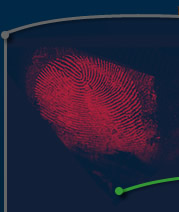









Students and Educators: Flesh-Eating Beetles

| TOUR LAB | LAB SCIENTISTS | CSI › | CAREERS | WILDLIFE LAWS | STORIES | BEETLES | PHOTOS | LINKS |
 The Lab's beetle colony. Credit: USFWS |
FLESH-EATING BEETLES
Ugh!! Bugs!! Why are we talking about beetles? Because the Forensics Lab uses dermestid beetles to "skeletonize" birds and mammals.
"Skeletonize" means to clean the bones of birds and mammals. The Lab does this for two reasons: for bones that are submitted as evidence, and for bones that will become part of the Lab's standards collection. This standards collection is used by the scientists as reference material to identify the bones that are submitted to the Lab as evidence in wildlife law enforcement investigations.
What do Dermestids Eat?
Dermestids, or flesh-eating beetles (family Dermestidae) are akin to carpet beetles — they will infest and eat any dried organic matter: old books, furs, taxidermied mounts, woolens, carpets, artifacts of wood or feathers, etc. Therefore, the colony at the Lab is separated from other materials that they could destroy.
 The beetles close-up. Credit: USFWS |
How Are the Beetles Contained?
The Lab grows its colony of beetles in a large, custom-made plexiglas box with a tight- fitting screen lid. There are several chambers within this box to separate different types of bones. Cotton batting lines the bottom of the container, to give the larvae a burrowable substrate in which to pupate and to wick away any spilled water to help avoid fungal growth. Small bowls of water are placed within the container to raise the humidity and as a source of water for the beetles. Additional cotton or poly fill batting is put in each bowl to keep the beetles from drowning.
The bugs like it warm, moist and dark. To raise the humidity, the colony is covered with paper towels that are moistened daily. An additional benefit of covering the colony with moist paper towels is to simulate the skin of an animal, so that the colony lives in conditions that mimic its natural environment.
For extra protection, there is a perimeter ring of borax around the colony to help contain them. The borax scratches the beetles exoskeleton, and they quickly die.
Life Cycle
Let's look at their life cycle. It all begins when the adults lay eggs. The eggs hatch either in meat or close to it. These hatchlings are called larvae. The larvae go through at least six different molting stages or instars. After the last instar, the larvae become pupae and they burrow holes in the batting to pupate. They hatch as adults and thus begin the cycle all over again.
The Process of Skeletonizing
Before a carcass is put into the colony, it is frozen for 72 hours to prevent other insects from infecting the colony. And again, when the bugs' work is complete, everything that is left of the carcass is frozen to prevent any beetles from escaping and eating something else in the Lab.
 Beetles skeletonizing a carcass. Credit: USFWS |
Once a carcass has been given to the colony, it usually takes about a week to be skeletonized if the colony is active. What determines the activity level of the colony is how much food they have been receiving. The more food, the more active the colony will be.
When a carcass is put into the beetle bin, it must be closely monitored. The first thing that the beetles eat is the flesh. But, if left in with the colony, the beetles will continue on to the keratin (hair, nails and hoofs or horns) which can destroy the specimen. Once the bones are removed from the colony, they are frozen and then soaked in either soapy water or in ammonia water to retard mold. They are then air or sun dried thoroughly before being labeled and stored.
 Beetles eating flesh. Credit: USFWS |
The colony is used to process bones for both the standards collection and for evidence. When evidence is in the bug chamber, it is kept under lock and key, and only the Lab scientist that is working on that case has the keys. In this case, that scientist would be the one who does the daily tending of the colony. The Forensic Laboratory receives evidence about once a month that needs to be skeletonized. Examples of evidence that might need to be skeletonized are when 1) an elk pelvis needs to be identified as either male or female; 2) the trunk of a duck, with no head or feet and few feathers, needs to be identified as either a Teal or a Mallard; 3) a bear paw with skin and rotten meat needs to identified as either a grizzly or a black bear. In all of these cases, the scientist would compare the skeletonized bones of the evidence with the standards collection to make these identifications.
Who Else Has Beetle Colonies?
The Forensic Lab is not the only agency that has a dermestid beetle colony. Most museums maintain them. In addition, some schools with natural history departments and some zoos with educational departments will have a beetle colony.
The Lab's beetle colony was begun in 1989 and patterned after an existing colony at the Smithsonian Museum. Through the years, the Lab's colony has been used to spawn five or six new colonies at different facilities throughout the United States.
 |
Last Updated:
February 19, 2008
U.S. Fish and Wildlife Service Home Page | Department of the Interior | USA.gov | About the U.S. Fish and Wildlife Service | Accessibility | Privacy | Notices | Disclaimer | FOIA |
 |